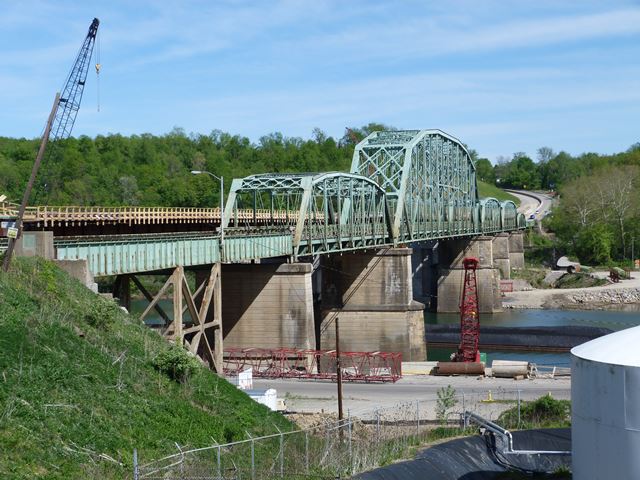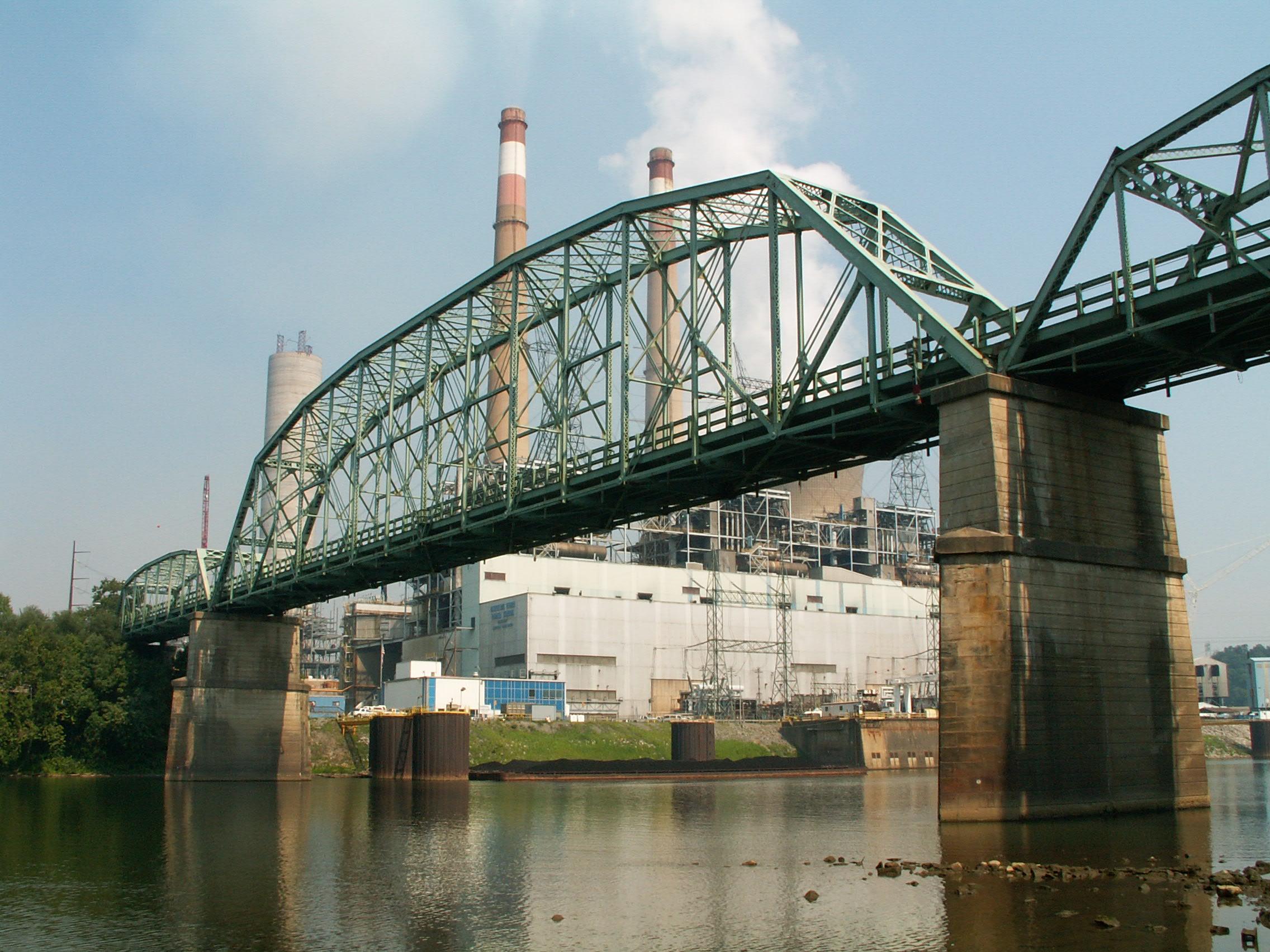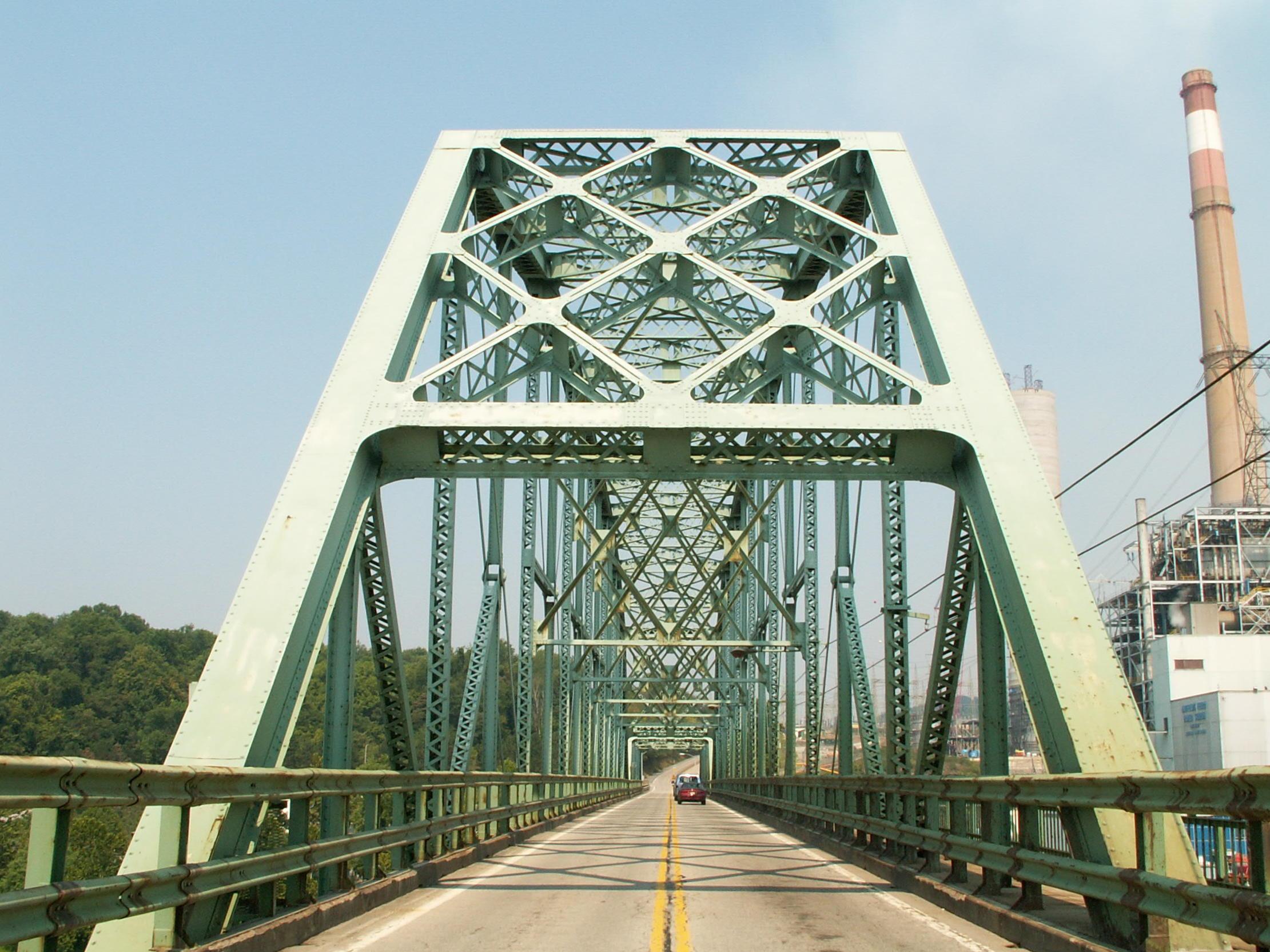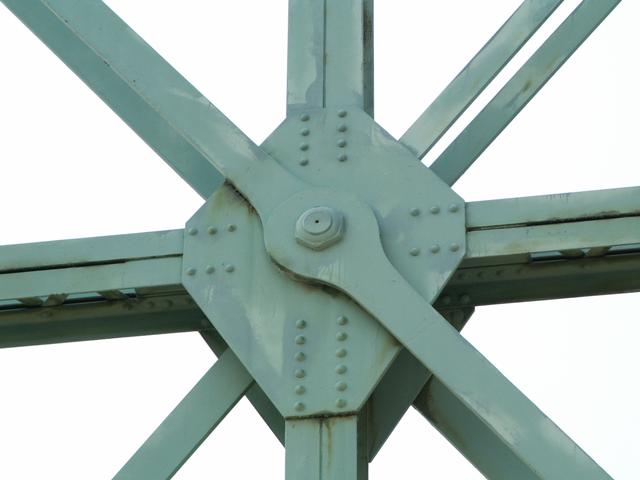We Recommend:
Bach Steel - Experts at historic truss bridge restoration.
Masontown Bridge
Intercounty Bridge
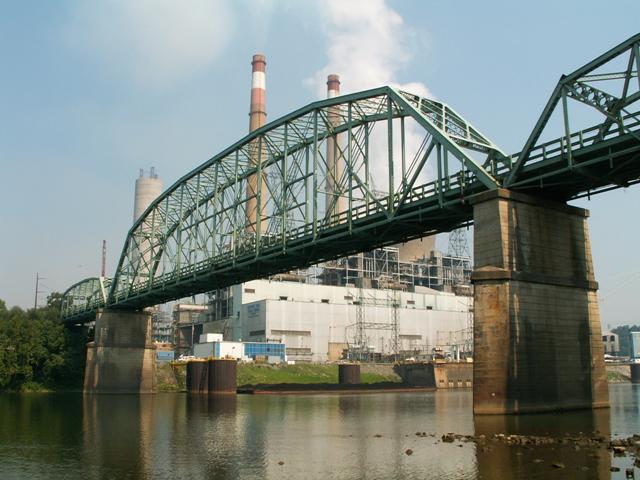
Primary Photographer(s): Nathan Holth
Bridge Documented: August 2007 and May 5, 2013
PA-21 (McClellandtown Road / E. Roy Furman Highway) Over Monongahela River
Near Masontown: Fayette County, Pennsylvania and Greene County, Pennsylvania: United States
1925 By Builder/Contractor: Independent Bridge Company of Pittsburgh, Pennsylvania
Not Available or Not Applicable
402.0 Feet (122.5 Meters)
1,457.0 Feet (444.1 Meters)
24 Feet (7.32 Meters)
5 Main Span(s) and 6 Approach Span(s)
260021001000000

View Information About HSR Ratings
Bridge Documentation
This bridge no longer exists!
View Archived National Bridge Inventory Report - Has Additional Details and Evaluation
View Original Plans For This Bridge
View A Historical Biography of Percy E. Hunter, A President of Independent Bridge Company.
This historic bridge was demolished by PennDOT Just Before 11:00 AM EDT, September 28, 2013!

This bridge was designed by Farris Engineering Company of Pittsburgh, Pennsylvania. It was built by the Independent Bridge Company of Pittsburgh. A photo of Percy E. Hunter, one of the company's presidents is shown to the right.
This bridge is truly a wonder to behold, as it is a large, multi-span truss bridge, that features an impressive main span that uses one of the most complex truss configurations around, the Pennsylvania truss. From every angle, including the impressive view from the top of the eastern side of the river valley, this is a bridge that was built to impress. The bridge is a significant as it contains a large-span example of a relatively uncommon truss configuration, and also is significant as a large, multi-span example of a truss bridge that includes pinned connections. Indeed, the connections are unusual on the bridge, and some connections feature a hybrid of pin-connections and rigid riveted connections. The bridge is also a perfect example of why the preservation of historic bridges should be important to Pennsylvania, since this is truly a bridge that was designed, fabricated, and built in Pennsylvania. Both the contractor and the consulting engineer were based in Pittsburgh. The Farris Engineering Company was a particularly prolific and noteworthy company. Many other bridges can be attributed to them, although the Masontown Bridge is an especially large and noteworthy example. Steel on the bridge was fabricated by Cambria, which was also a Pennsylvania steel company. Pennsylvania was traditionally the home of the steel industry, and these bridges are living history memorials to this great heritage. Historic metal truss bridges should be to Pennsylvania what the automobile is to Michigan. However, government agencies like PennDOT have made sure that exactly the opposite is true, and have moved to obliterate this heritage forever, as they march around like an army engaged in total war, demolishing one historic bridge after another.
Indeed, despite the beauty and history of this bridge, PennDOT is going to replace and demolish this bridge for 50 million dollars, and in doing so will deal a severe blow to our transportation heritage and one of the bridges that truly helps make Pennsylvania a prime destination for anyone interested in photographing or learning about historic bridges.

Could this bridge be restored for continued vehicular use? More than likely. The 2006 structural evaluation of this bridge found that it was not structurally deficient. It was only considered functionally obsolete, which only refers to factors that do not relate to structural strength like whether the deck is wide enough for the traffic it serves. The bridge was given an operating rating of 46.8 metric tons. The structure had a 44.9% sufficiency rating, which is impressive for a 1925 structure on a busy highway with many trucks. These statistics are representative of a bridge that could be restored. In fact, it is likely that a better choice that would have made the road safer, and kept the historic bridge standing, would be to build a second one-lane bridge next to the historic bridge and restore the historic bridge for vehicular use, and form a one-way couplet of bridges.
What is wrong with the way this nation treats historic bridges? First off, half of the bridges that should be considered historic are not being considered historic. A bridge as large and impressive as the Masontown Bridge, which also features unusual connection design, and is of noteworthy length and noteworthy as a multi-span example of its type should be historic. However, it was determined to be non-historic by the Historic Bridge Inventory, who claims it is common technology.
There is a paradox to this approach of identifying historic bridges. The surveyors looked at the the big rivers in Pennsylvania like the Allegheny River, Monongahela River, and Ohio River, and saw maybe 10 large truss bridges dating from 1900-1930 that all feature the same overall structure type (ie, large-scale simple-span trusses). They saw this, and then declared all the bridges non-historic, saying that they are common technology. This left all the bridges unprotected by Section 106 and Section 4(f), and now PennDOT has no trouble moving to have them all demolished. Before too long, there will not be 10, there will be zero because they will all be gone. The historic significance of bridges should be determined based on whether a bridge's technology is used today, not based on how many other examples have not been demolished yet. The technology seen on the Masontown Bridge will never again be used in this world, except for perhaps historic reproduction exhibits in parks, etc. Listing a bridge as historic hardly guarantees its protection, the bridges are still usually demolished. So what is there to lose by declaring a bridge historic. At least then, it would force the bridge's owner to do what should really be done for any bridge, which is to look at rehabilitating or somehow reusing the original structure, before moving to demolishing it. For instance, with the Masontown Bridge, a local group wants to see a bicycle path on the new bridge, to allow for a trail system. Indeed, a more logical course of action would be to leave the historic Masontown Bridge standing next to its replacement for non-motorized use. This would provide an access for the trail, and indeed would likely be one of the top attractions on such a trail.
HistoricBridges.org is proud to give this bridge the high Historic Significance Rating that a large, multi-span pin-connected truss bridge from the 1920s deserves. This website is not about following the lead of our failed government transportation and historic preservation policies; it is about promoting changes that will help save these bridges. The Masontown Bridge should be considered an important historic bridge.
Information and Findings From Pennsylvania's Historic Bridge InventoryDiscussion of Bridge The 11 span, 1,458' long and 25' wide bridge is composed of three built up thru girder spans at each end, one 127' long Warren with verticals and polygonal top chord pony truss, three 187' long Parker thru truss spans and one 402' long Pennsylvania thru truss river span. The bridge is 25' wide. The truss members of the thru trusses are built up, and the upper panel point connections are riveted, but the intermediate connections of the Pennsylvania truss and the lower panel point connections throughout are pinned. The combination of connections is not common for 1925, but it is not technologically significant. The main span is long, but the bridge has no innovative details. It was designed by Farris Engineering Co. of Pittsburgh for Greene and Fayette counties. The firm was established in 1910, and their designs are not uncommon in the region. The bridge is not historically or technologically significant. Discussion of Surrounding Area The bridge carries a 2 lane street over the Monongahela River, one railroad track of CSXT, and a private road at the Fayette/Greene County line near Masontown. The Hatfield's Ferry power station is on the Green County side north of the bridge. Bridge Considered Historic By Survey: No |
![]()
Photo Galleries and Videos: Masontown Bridge
About - Contact
© Copyright 2003-2024, HistoricBridges.org. All Rights Reserved. Disclaimer: HistoricBridges.org is a volunteer group of private citizens. HistoricBridges.org is NOT a government agency, does not represent or work with any governmental agencies, nor is it in any way associated with any government agency or any non-profit organization. While we strive for accuracy in our factual content, HistoricBridges.org offers no guarantee of accuracy. Information is provided "as is" without warranty of any kind, either expressed or implied. Information could include technical inaccuracies or errors of omission. Opinions and commentary are the opinions of the respective HistoricBridges.org member who made them and do not necessarily represent the views of anyone else, including any outside photographers whose images may appear on the page in which the commentary appears. HistoricBridges.org does not bear any responsibility for any consequences resulting from the use of this or any other HistoricBridges.org information. Owners and users of bridges have the responsibility of correctly following all applicable laws, rules, and regulations, regardless of any HistoricBridges.org information.
![]()




